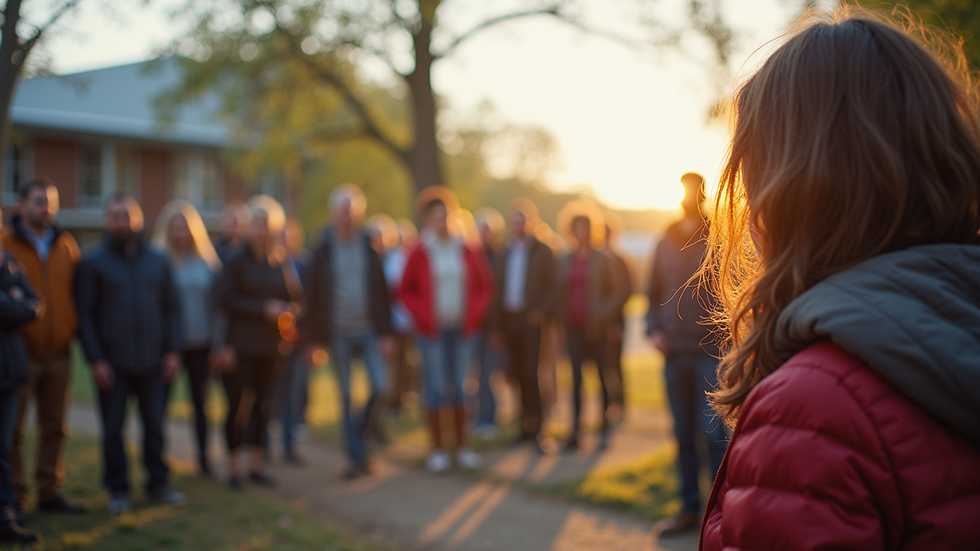The Power of Collaboration in Community Art Projects
- diane wiggins

- Jul 13
- 4 min read
Art has the unique power to bring people together, and when communities unite for art projects, remarkable transformations can occur. Collaborating on community art projects not only fosters creativity but also strengthens social bonds, enhances local identity, and promotes well-being. In this post, we will explore the incredible influence of collaboration in community art and how it ignites positive change.
The Role of Community Art
Community art is about more than just creating visually pleasing pieces; it is about uniting diverse groups of people. Through collaborative art, members of a community, regardless of their background, can express themselves and their shared experiences. This process fosters dialogue and understanding among participants.
When people come together to create, they are likely to produce work that reflects their collective identities. Communities can capture local stories, history, and culture through art, helping to reinforce a sense of belonging. According to a report from the National Endowment for the Arts, public engagement in community art can lead to a more vibrant civic life and encourage community members to participate in broader civic activities.

Benefits of Collaboration in Community Art
Collaboration in community art yields numerous benefits. Firstly, it encourages skills sharing. Participants bring their unique talents to the table—a graphic designer may offer insights into composition, while a local historian can provide context to the theme.
Furthermore, collaborative projects improve social connectivity. Through shared experiences, participants build new friendships and networks. This is essential for fostering a strong communal spirit, especially in urban settings where individuals may feel isolated.
Studies have shown that communities with active art projects report increased emotional well-being. For example, participants in community art initiatives are more likely to engage in volunteer work, creating a ripple effect that enhances social responsibility.
Finally, collaboration leads to a sense of ownership and pride in the outcome. When everyone has a hand in the creative process, there is a stronger emotional investment in the final product.
What is considered community works of art?
Community works of art can take many forms, encompassing everything from murals and sculptures to ephemeral installations and performance art. These projects often rely on public spaces, making art accessible to all.
A great example of community artwork can be seen in community gardens that incorporate public art elements. These gardens do not just beautify a space; they also serve as gathering places and resources for education, food sharing, and environmental stewardship.
Moreover, community art can support social causes. Projects that highlight issues like climate change, social justice, and cultural diversity can invoke conversations that inspire action. By representing the voices of marginalized individuals, these artworks can create a more inclusive society.

Successful Community Art Initiatives
Many communities across the globe have successfully engaged in collaborative art projects. One prominent example is the "Chicago Mural Movement." Initiated in the 1970s, artists collaborated with local residents to create murals that reflect the city’s history and diversity.
One notable mural, located in the Pilsen neighborhood, depicts the stories of Mexican-American culture. This project not only beautified the area, but it also educated residents and visitors about the neighborhood’s rich heritage. Over time, the Pilsen murals have become iconic, attracting tourists and art enthusiasts alike.
Another inspiring project is the "Big Draw" initiative in the UK, which invites communities to engage in drawing activities in public spaces. This annual event emphasizes creativity and free expression, encouraging people of all ages to collaborate on collective art pieces. In doing so, it nurtures community relationships and celebrates local artists.
Getting Involved in Community Art
If you’re interested in participating or starting your own community art project, here are some actionable recommendations:
Identify Local Talent: Reach out to artists, teachers, and community leaders. Form a planning committee that includes diverse voices.
Choose a Theme: Decide on a subject that resonates with your community. Whether highlighting local history or addressing social issues, a well-defined theme will guide the project.
Organize Workshops: Consider hosting community art workshops. These sessions can provide opportunities for skill-sharing and brainstorming. They can be informal and fun, allowing participants to learn and collaborate.
Select a Location: Public spaces or community centers make excellent venues for art projects. Locations like parks or school walls can become blank canvases that engage residents.
Promote the Project: Use social media, flyers, and community bulletins for promotion. Engaging local news outlets can also help spread the word.
Celebrate and Unveil: Plan an unveiling event to celebrate the completion of your community artwork. This will serve as a great way to come together and reflect on the creative journey.

The Lasting Impact of Collaborative Art
The power of collaboration in community art projects can lead to long-lasting positive effects. Through these initiatives, communities build resilience and foster creative problem-solving skills. Art can serve as a narrative, helping individuals understand their shared experiences better, and it can unify diverse perspectives.
The visual impact of public artwork can also instigate economic benefits. Attractive art can draw visitors to an area, invigorating local businesses and fostering economic revival.
By working together, community members can create engaging and meaningful art that becomes a catalyst for social change. This dynamic interplay between art and community has the potential to inspire future generations to continue the legacy of collaboration.
Additionally, the arts provide a unique platform for engagement in challenging socio-political landscapes. In times of crisis, art serves as a means for healing and understanding, expressing feelings that might otherwise remain unspoken.
Collaboration invigorates the passion for creating art, allowing community members to come together, share their stories, and uplift one another. Through the lens of art, we can envision the future we want to create—a world that fosters connection, resilience, and unity through creativity.





Comments